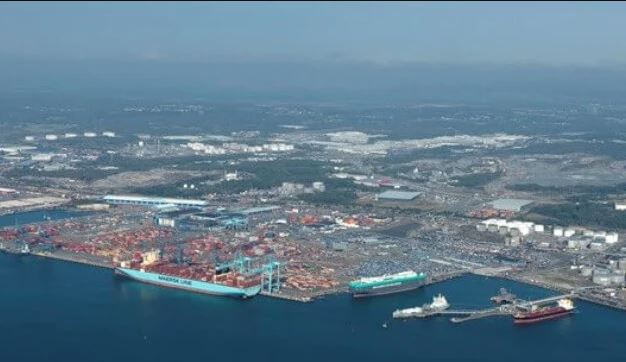The Port of Gothenburg, Sweden is taking steps to position itself as a leader in the emergence of renewable methanol as a marine fuel. The port is establishing the framework for ship-to-ship bunkering and taking steps to build the supply of the alternative fuel as it targets Maersk and X-Press Feeders, which are both scheduled to introduce some of the first methanol-fueled container feeder ships by 2023.
“From the Port of Gothenburg, we want to support this by enabling these vessels to take bunker at their convenience,” said Christoffer Lillhage, Senior Business Development Manager Energy at the Gothenburg Port Authority. “Therefore, we are happy to share that we have received acceptance from the Swedish Transport Agency for the general methanol operating regulations for ship-to-ship bunkering.”
To speed the development of the infrastructure, the Gothenburg Port Authority is releasing general methanol operating regulations for ship-to-ship bunkering. Publishing of the regulations was the result of the general approval from the authorities. Port officials noted that each terminal will do a complimentary risk assessment, but that it would be “more of a formality” now that the general guidelines are in place.
“Now we hope to see Maersk, X-Press Feeders, and many other shipping lines routing their new methanol vessels to the North of Europe,” said Elvir Dzanic, CEO at the Gothenburg Port Authority.
The Port of Gothenburg has already handled methanol in the port. They noted that Stena Line started bunkering its ferry Stena Germanica in 2015 with methanol using a truck-to-vessel process. To support the large-scale use of methanol, however, the port is targeting ship-to-ship bunkering and is also making arrangements to set up a value chain by 2024 with the ambition to become the primary bunkering hub for renewable methanol in Northern Europe.
“Together with industry front runners in the field of E-fuels such as Liquid Wind and their partner Ørsted, we are working to make this a reality,” said Lillhage. “We are planning for large-scale storage of methanol with storage operators in the port when the demand is in place. We encourage methanol producers and stakeholders in the industry to reach out and start a dialog with the Port of Gothenburg as we have set the aim to become a bunker and storage hub for methanol/eMethanol.”
By 2030, the Port of Gothenburg has set out an ambitious target to reduce shipping emissions by 70 percent within the port area. Port officials note that one key step to reaching this goal is to provide a variety of shipping fuels that contribute to bringing down emissions. They believe that renewable products like eMethanol will be one important fuel to reach net-zero targets and can also represent a significant future business opportunity for the port and its suppliers.
Source: The Maritime Executive






